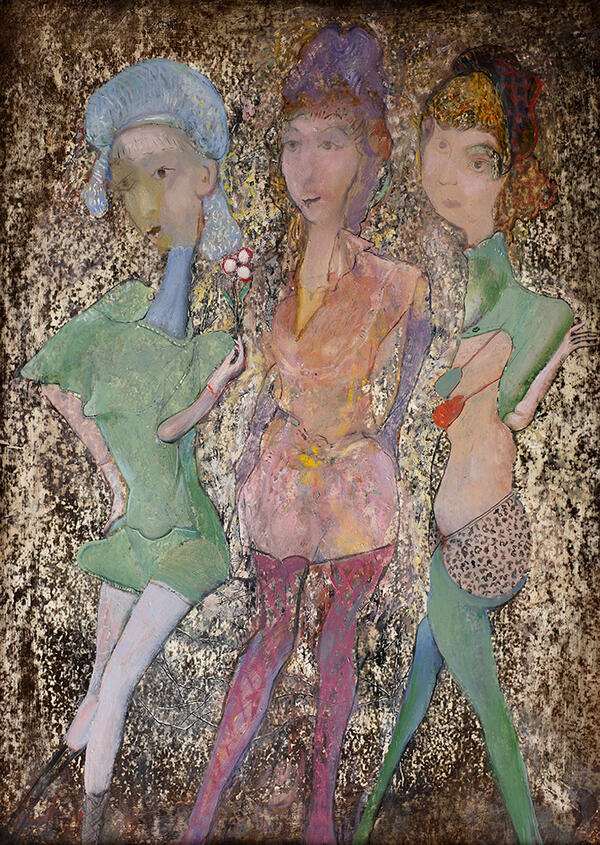The painter, graphic and book artist Vladimir Panteleimonovich Muravyov was born in Kostroma in 1924. In 1942 he went to the front, in 1943 he was seriously wounded, however, he finished his service after the end of the Great Patriotic War. He returned to his hometown in 1947.
Vladimir Muravyov created his art while Socialist Realism reigned supreme. However, he became part of the unofficial art scene, which was developed in response to the strict regulations enforced on artists by the state. For the first time those who did not conform to social realist dogmas revealed not the images of healthy smiling Soviet people, but the depravity and imperfection of reality.
Muravyov began his career at the Kostroma Art School. In 1958 he left for Moscow. The artist aspired for honesty in creativity, and to be frank and courageous in his experiments.
The “Three Graces” was painted in 1980 as part of the artist’s “Beauties” series. Graces are ancient Roman goddesses who personified beauty, femininity and youthful charm. It was believed that they were also patrons of creativity and could grant inspiration. Vladimir Muravyov’s painting in no way represents the ideals of female beauty that artists admired since antiquity, but rather on the contrary.
The series is made up of female portraits. However, the artist did not portray them in the classical sense of the word, he unveiled the multi-layered nature of people, tried to reach the secret corners of the subconscious, to expose the hidden vices of both individual and society. His characters went down in the history of Russian art as portraits or radiographs of human entities.
By speaking the truth
and exposing vices, Vladimir Panteleimonovich Muravyov resisted the temptations
of cynicism and mockery. The Russian art historian, curator and art critic
Sergey Ivanovich Kuskov commented on Muravyov’s work:





